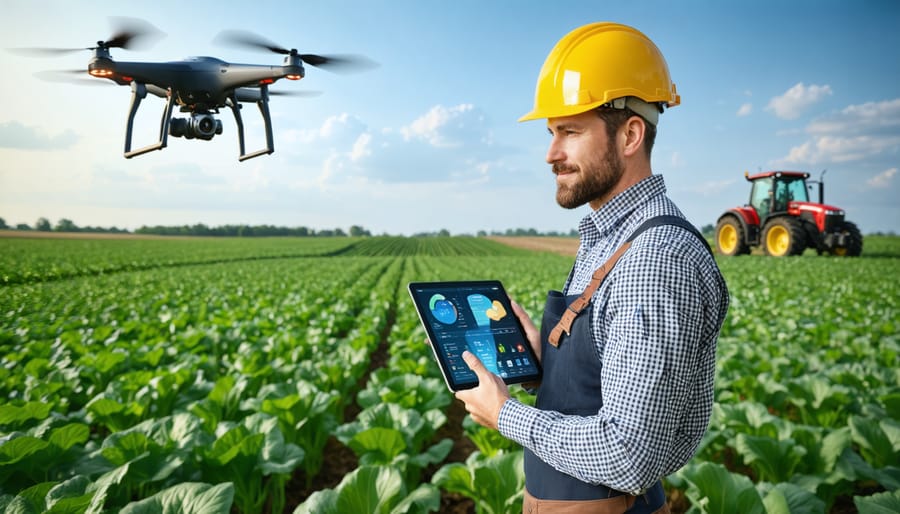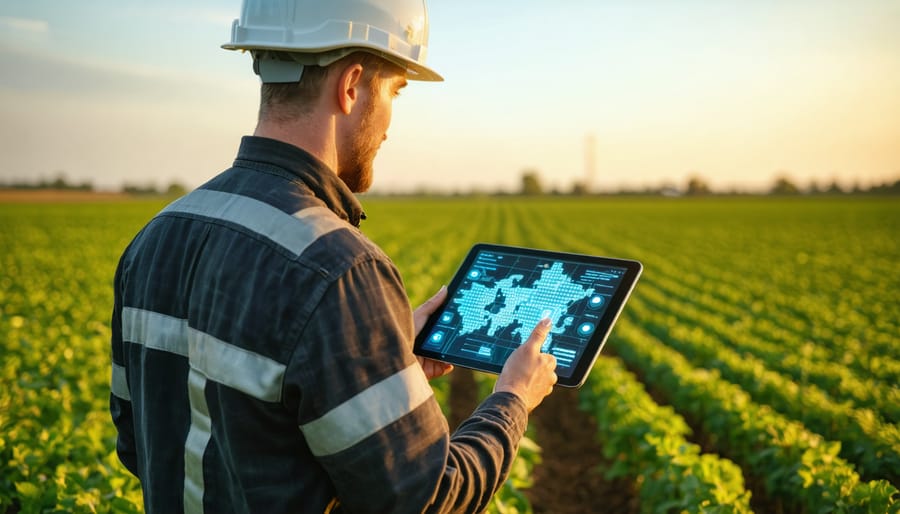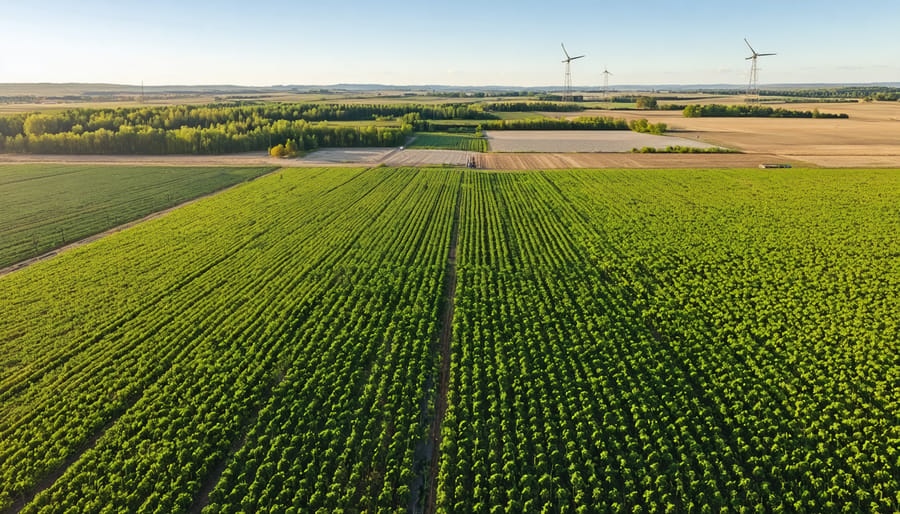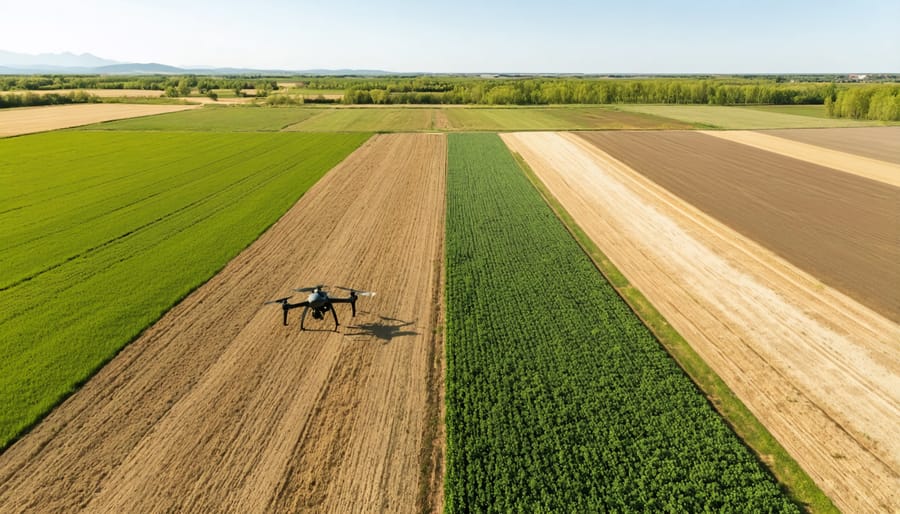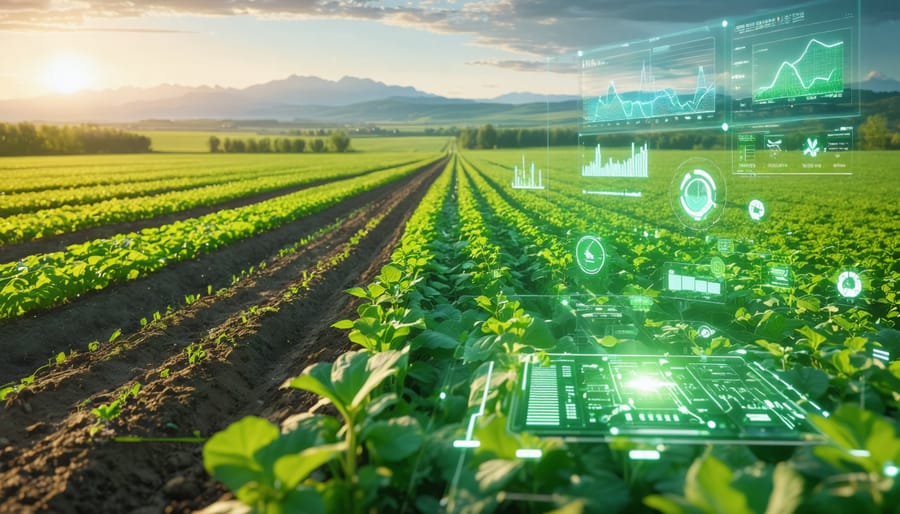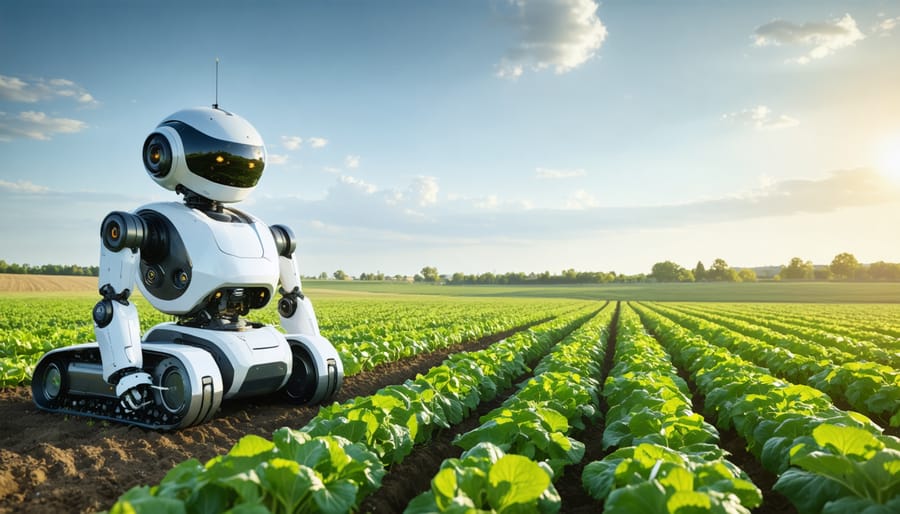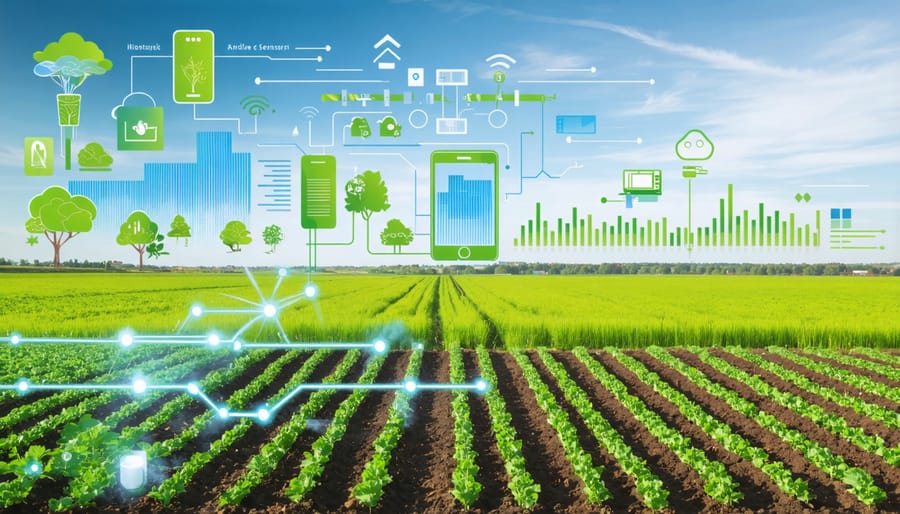Digital farmers are revolutionizing Canadian agriculture, transforming traditional family farms into data-driven powerhouses through smart technology adoption and precision farming practices. From Alberta’s wheat fields to Ontario’s vegetable operations, producers are leveraging smartphones, sensors, and farm management software to boost yields while reducing their environmental footprint. This digital transformation isn’t just about fancy gadgets – it’s fundamentally changing how we monitor crop health, manage resources, and make critical farming decisions.
Today’s digital farmer combines generations of agricultural wisdom with real-time data analytics, drone surveillance, and automated systems to achieve what was impossible just a decade ago. Whether it’s using soil moisture sensors to optimize irrigation, deploying GPS-guided equipment for precise seeding, or utilizing predictive analytics for pest management, these tools are helping Canadian farmers stay competitive in an increasingly challenging global market.
This evolution towards digital agriculture is particularly crucial for organic producers, who must carefully balance sustainability with profitability. By embracing digital tools, organic farmers can better document their practices, ensure compliance, and make evidence-based decisions that support both their certification requirements and bottom line.
The Modern Digital Farmer’s Toolkit
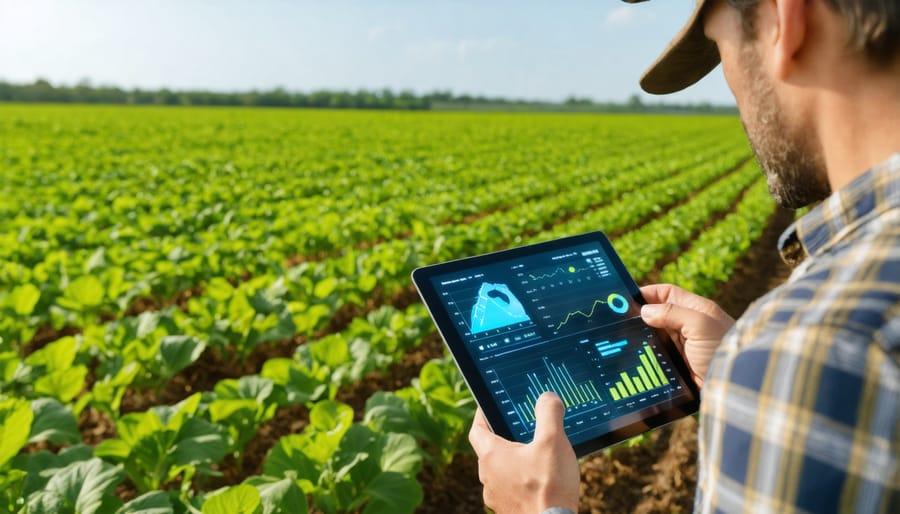
Farm Management Software Solutions
Modern farm management software solutions are revolutionizing how organic farmers across Alberta and beyond handle their daily operations. Popular platforms like Farmobile and Agrivi have become invaluable tools for tracking crop rotations, managing soil health, and maintaining organic certification records.
These digital solutions offer features specifically designed for organic operations, including detailed field mapping, input tracking, and compliance documentation. For instance, Farm Credit Canada’s AgExpert Field helps farmers monitor their organic certification requirements while managing day-to-day operations. This platform is particularly well-suited for Canadian farmers, offering both English and French interfaces and supporting metric measurements.
Local success stories include the Peterson Family Farm near Lethbridge, which reduced administrative time by 60% after implementing digital management tools. Their system now automatically generates reports for organic certification audits and tracks crop rotation histories across their 800-hectare operation.
Key benefits include:
– Real-time weather integration for precise planning
– Mobile accessibility for field-based decision making
– Automated record-keeping for certification compliance
– Integration with soil testing and analysis
– Inventory management for organic inputs
– Financial tracking and reporting
Many of these platforms offer free trials or basic versions, allowing farmers to test their functionality before making a commitment. Community support groups and online training resources are available through provincial agricultural extension services to help farmers maximize these tools’ potential.
Precision Agriculture Technologies
Today’s organic farmers are embracing precision agriculture technologies to enhance their operations while maintaining ecological principles. GPS-guided systems have revolutionized field mapping and crop planning, allowing farmers to create detailed soil composition maps and identify areas requiring specific attention.
Soil moisture sensors, placed strategically throughout fields, provide real-time data on water content at various depths, helping farmers make informed irrigation decisions while conserving water. These sensors can be particularly valuable during Alberta’s varying precipitation patterns, ensuring optimal moisture levels for organic crops.
Advanced monitoring systems now include drone technology equipped with multispectral cameras, capable of detecting early signs of pest infestations or nutrient deficiencies. This technology enables farmers to address issues before they become severe, reducing crop losses while maintaining organic certification requirements.
Weather stations connected to farm management software provide hyperlocal climate data, crucial for timing cultural practices like mechanical weed control and cover crop planting. Many Alberta farmers are implementing these systems to work with, rather than against, natural weather patterns.
Remote sensing technology helps track crop health through vegetation indices, supporting decisions about organic fertilizer application and crop rotation planning. These tools have proven especially valuable for large-scale organic operations, where precise timing and application of organic practices are essential for success.
Real-Time Decision Making for Organic Success
Weather Monitoring and Prediction
Modern digital farmers rely heavily on sophisticated weather monitoring and prediction tools to make informed decisions about their organic operations. These technologies combine local weather station data, satellite imagery, and artificial intelligence to provide accurate, farm-specific forecasts and insights.
Many Alberta farmers are now using smart weather stations that measure crucial parameters like soil moisture, temperature, humidity, and wind patterns. These systems, which can be accessed through smartphone apps, help farmers anticipate frost risks, plan irrigation schedules, and determine optimal times for seeding and harvest.
Real-time weather monitoring has become particularly valuable for organic farmers, who need precise timing for natural pest management and soil amendment applications. For instance, Manitoba organic farmer Sarah Thompson shares, “Our weather monitoring system helped us save our entire tomato crop last season by alerting us to an unexpected frost risk, giving us time to implement protective measures.”
Advanced prediction models now incorporate historical weather data with current conditions to forecast weather patterns up to 14 days ahead. These predictions are especially valuable for planning critical activities like cover crop planting and natural pest control applications, which are weather-dependent in organic systems.
Climate tracking tools also help farmers maintain detailed records for organic certification compliance while identifying long-term weather trends that influence crop selection and rotation planning. Many systems can now integrate with other farm management software, creating a comprehensive digital ecosystem for decision-making.
For best results, agricultural experts recommend combining multiple data sources, including Environment Canada’s weather services, local weather stations, and specialized agricultural weather networks, to create a robust monitoring system tailored to your specific location and needs.
Soil Health Management Systems
Modern organic farming relies heavily on soil health monitoring systems to maintain certification standards while optimizing crop yields. These digital solutions have revolutionized how Alberta farmers track and manage their soil’s organic matter, nutrient levels, and biological activity.
Real-time sensors placed throughout fields now provide continuous data on moisture content, temperature, and pH levels. This information syncs directly with smartphone apps, allowing farmers to make informed decisions about irrigation and amendment applications without waiting for traditional lab results.
Many Prairie farmers have adopted smart soil probes that measure electrical conductivity and organic carbon levels. These devices, when paired with GPS mapping, create detailed soil health profiles across different field zones. This precision approach helps target specific areas needing attention, reducing unnecessary inputs and maintaining organic certification requirements.
Cloud-based platforms integrate this data with weather forecasts and historical field records, offering predictive insights for soil management. For example, the Thompson family farm in Red Deer County used these tools to reduce their amendment costs by 25% while improving their soil organic matter by 2% over two growing seasons.
Automated record-keeping systems help track organic certification requirements, storing soil test results, amendment applications, and crop rotation data in one secure location. This digital documentation streamlines the certification process and provides valuable trending data for long-term soil health planning.
For smaller operations, affordable smartphone-compatible soil testing kits now offer quick field assessments, helping farmers maintain organic standards without significant technology investments.
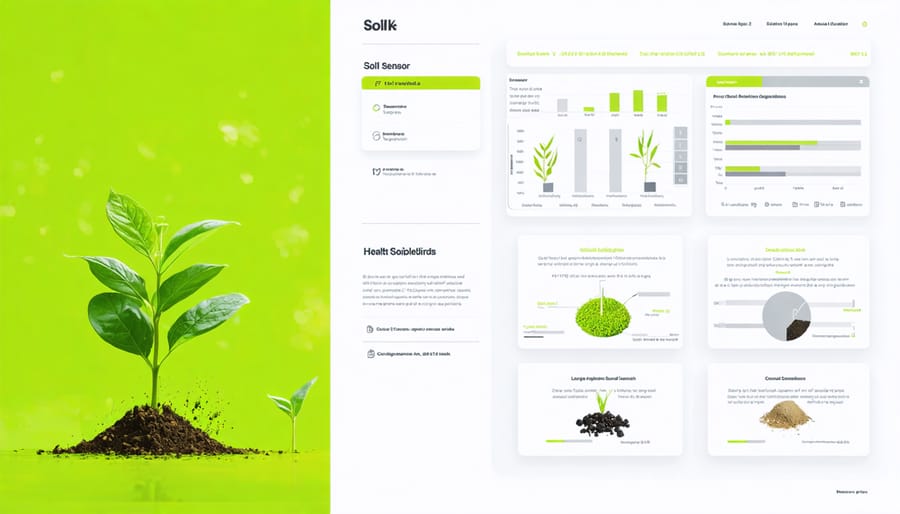
Alberta Success Stories
Small-Scale Success: The Thompson Family Farm
Located just outside of Red Deer, Alberta, the Thompson Family Farm has become a shining example of small-scale organic farming success through digital transformation. Sarah and Mike Thompson, third-generation farmers, transformed their 40-hectare operation by strategically implementing digital tools while maintaining their commitment to organic principles.
The Thompsons began their digital journey in 2019 by installing soil moisture sensors and weather stations connected to their smartphones. This initial investment of $5,000 quickly paid for itself through optimized irrigation scheduling and reduced water usage by 30%. They then integrated a farm management app to track planting schedules, crop rotations, and harvest data.
“The beauty of going digital is that we can make decisions based on real data, not just gut feeling,” explains Sarah Thompson. “We know exactly when to plant, when to harvest, and how our crops are performing throughout the season.”
Their most significant success came from implementing an online marketplace platform, allowing them to sell directly to local restaurants and families. This digital connection to customers increased their profit margins by 40% and created a loyal community of supporters.
The Thompsons now share their experiences with other Alberta farmers, demonstrating how digital tools can enhance rather than replace traditional farming wisdom.
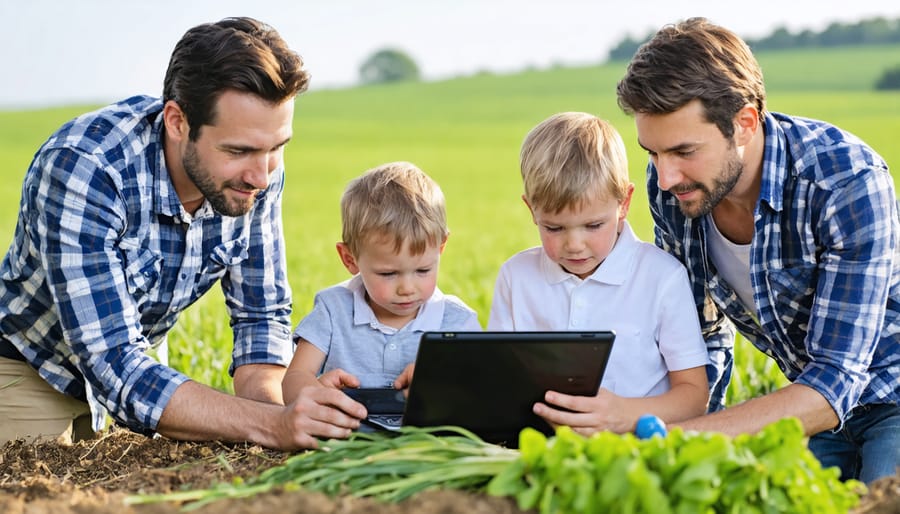
Large Operation Integration: Prairie Organic Cooperative
The Prairie Organic Cooperative, spanning 2,800 hectares across southern Alberta, demonstrates how digital farming tools can transform large-scale organic operations. In 2021, the cooperative, consisting of 15 member farms, implemented an integrated digital management system that revolutionized their approach to sustainable agriculture.
The cooperative’s success story began with the adoption of a unified farm management platform that connects all member farms. Using soil moisture sensors and weather stations across their properties, farmers receive real-time data through their smartphones, enabling precise irrigation scheduling and frost protection measures. This system has resulted in a 30% reduction in water usage while maintaining optimal crop health.
Field mapping and crop tracking software help members coordinate crop rotations and maintain organic certification requirements. The cooperative uses drone technology for regular field monitoring, allowing early detection of pest issues and nutrient deficiencies. This proactive approach has reduced crop losses by 25% compared to previous seasons.
Perhaps most importantly, the digital integration has strengthened the cooperative’s community aspect. Members share equipment scheduling through a mobile app, coordinate delivery schedules, and exchange growing tips through an internal communication platform. The system also streamlines organic certification documentation, saving each farmer approximately 10 hours per month on administrative tasks.
The cooperative’s experience shows that digital tools can enhance both the operational efficiency and community aspects of organic farming, making it a model for other Canadian agricultural organizations considering similar transitions.
Getting Started with Digital Farm Management
Assessment and Planning
Before implementing digital solutions on your farm, it’s essential to conduct a thorough assessment of your current operations and future needs. Start by identifying your farm’s key challenges and pain points – whether that’s irrigation management, crop monitoring, or labour efficiency. Create a detailed inventory of your existing technology infrastructure, including internet connectivity and equipment compatibility.
Consider your farm’s scale, crop types, and specific environmental conditions when evaluating digital solutions. For instance, Alberta farmers dealing with shorter growing seasons might prioritize weather monitoring and frost alert systems, while those in irrigation districts may focus on smart water management tools.
Set clear objectives for digital implementation, such as reducing water usage by 20% or improving yield forecasting accuracy. Develop a realistic budget that accounts for initial investment, training, and ongoing maintenance costs. Remember that starting small with one or two well-chosen solutions often yields better results than trying to digitize everything at once.
Consult with local agricultural technology experts and fellow farmers who have successfully integrated digital tools. The Alberta Farm Fresh Producers Association and regional agricultural offices can provide valuable insights and connect you with relevant resources. Create a timeline for implementation that aligns with your farming calendar, ensuring minimal disruption to regular operations.
Finally, establish metrics to measure success and return on investment, such as labour hours saved, resource efficiency gains, or crop yield improvements.
Implementation and Training
Successful adoption of digital farming tools requires a systematic approach and commitment to learning. Start by assessing your farm’s specific needs and identifying areas where digital solutions could provide the most significant impact. Many Alberta farmers begin with basic tools like weather monitoring systems or soil sensors before advancing to more complex technologies.
Create a timeline for implementation, typically spanning 6-12 months, to allow for proper training and adjustment periods. Begin with a pilot project on a small portion of your land to minimize risks and build confidence. For example, test precision agriculture tools on 10-15 hectares before expanding to your entire operation.
Invest in proper training for yourself and your team. Many agricultural technology providers offer comprehensive training programs, and organizations like Alberta Agriculture and Forestry provide workshops specifically designed for digital farming adoption. Consider partnering with experienced digital farmers in your region who can mentor you through the transition.
Document your progress and maintain detailed records of both successes and challenges. This information becomes invaluable as you expand your digital farming practices. Regular team meetings to discuss implementation progress and address concerns help ensure everyone stays aligned with the new systems.
Remember that digital transformation is a journey, not a destination. Start small, focus on mastering one tool at a time, and gradually build your digital farming ecosystem as your confidence and expertise grow.
Embracing digital farming technologies represents a transformative step forward for Canadian agriculture. The benefits are clear: increased yield efficiency, reduced environmental impact, and improved farm management through data-driven decision-making. As more Alberta farmers adopt these tools, we’re seeing a growing community of tech-savvy producers who are leading the way in sustainable agriculture.
Looking ahead, the digital farming landscape continues to evolve with promising developments in AI, automation, and precision agriculture. These advancements are becoming more accessible and affordable, making it an ideal time for farmers to begin their digital transformation journey. The support network, including agricultural extension services and farmer-to-farmer mentorship programs across Canada, ensures that help is always available for those taking their first steps into digital farming.
By becoming a digital farmer today, you’re not just modernizing your operation – you’re future-proofing it for the next generation while contributing to a more sustainable and efficient agricultural sector in Canada.

